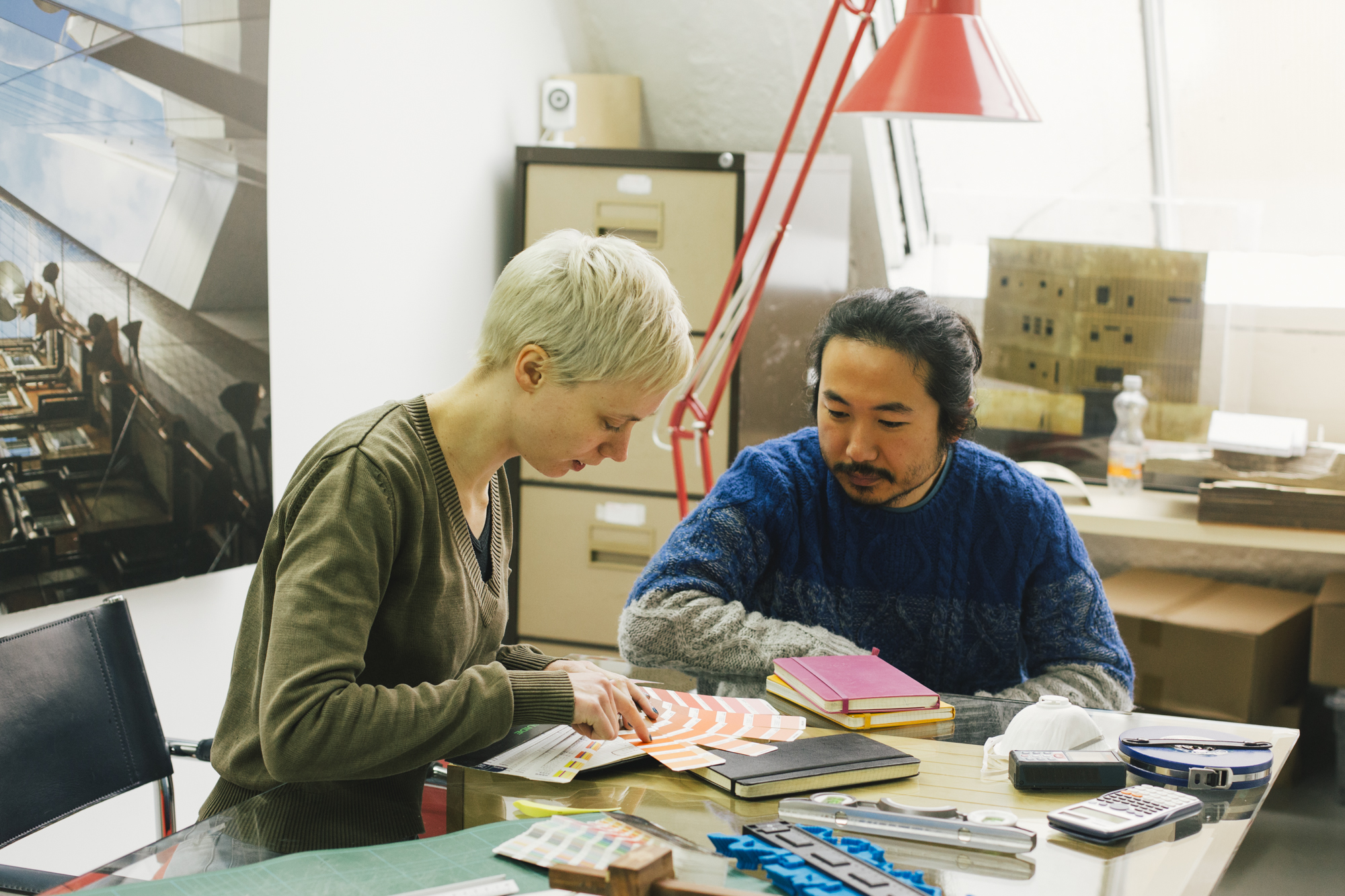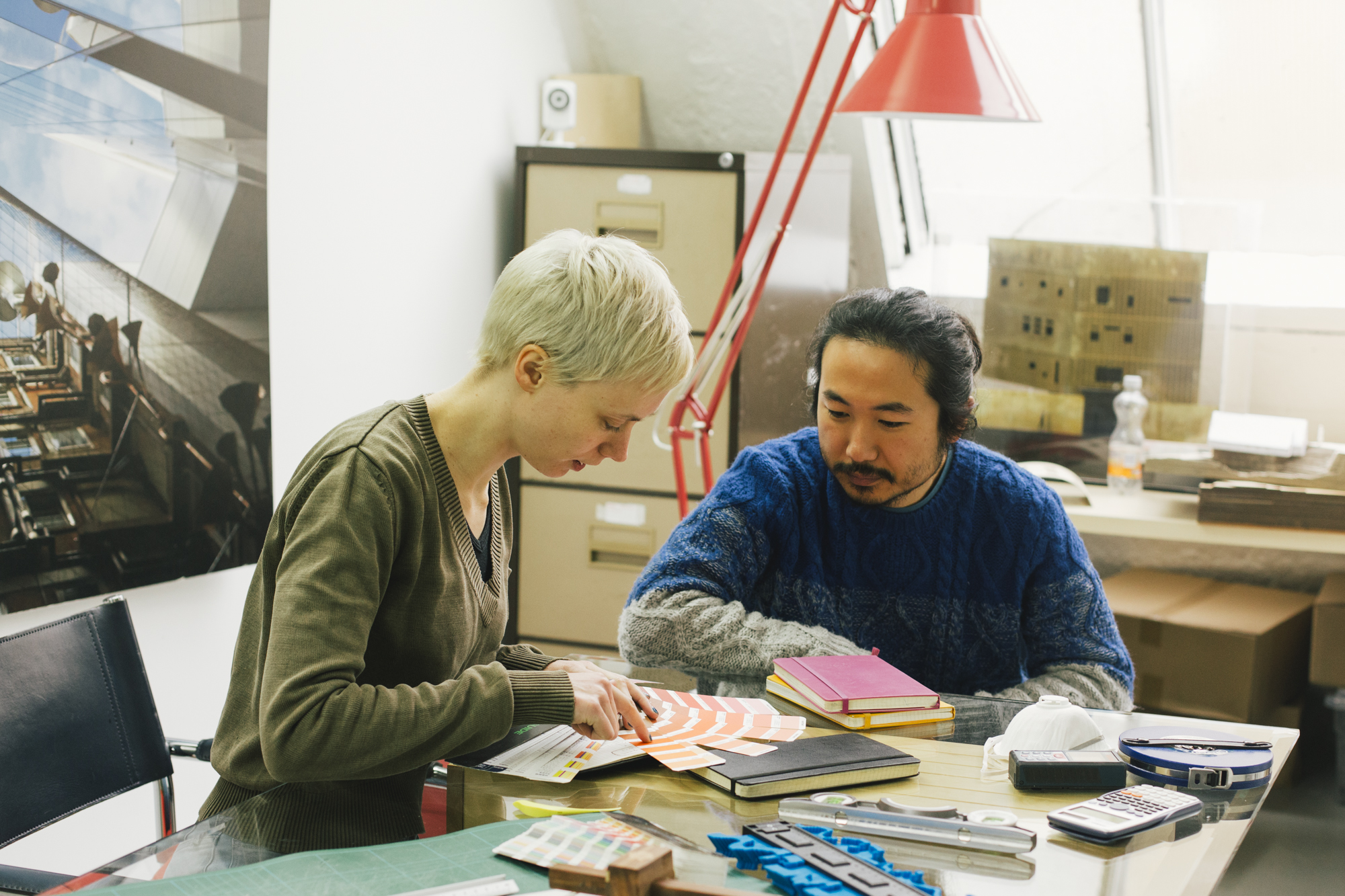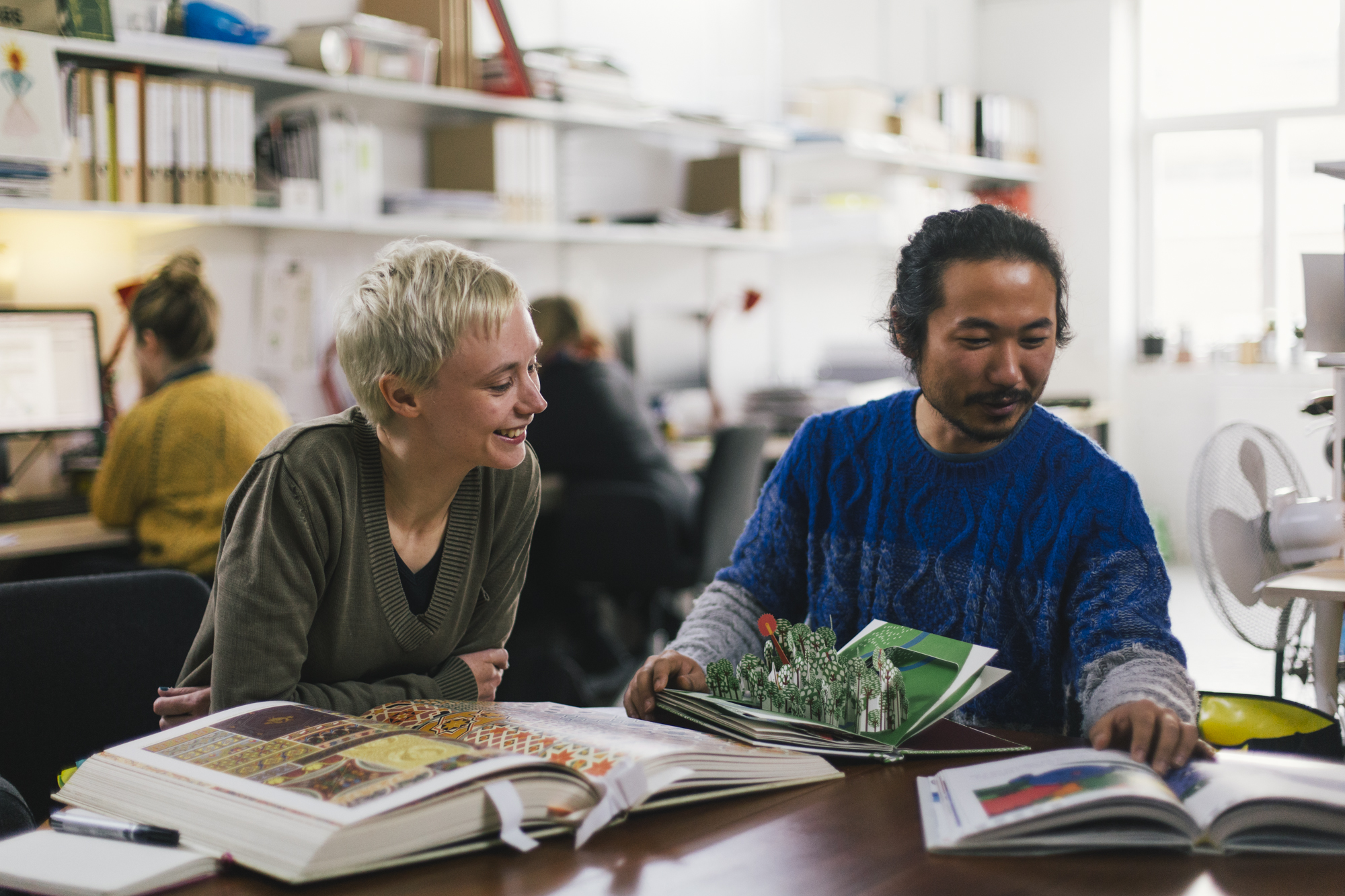Studio Weave
We meet the London-based studio taking a refreshingly different approach to architecture


We meet the London-based studio taking a refreshingly different approach to architecture
Originally printed in Protein Journal Issue #15
Architecture is a discipline that takes time. A British student who signs on for a course in 2015 won’t be able to call themselves a professionally qualified architect until 2022. And it’s not just becoming an architect that takes a while; prestigious, forward-thinking starchitects, operating round the globe, regularly bemoan the fact that by the time their creations finally take a physical form their aesthetics seem completely out of date.
A new crop of millennial architects is not so comfortable with such timescales, though. The recession is a major factor that has forced many to reconsider the typical pathway for architecture graduates, which usually consists of starting work on tasks such as house extensions before moving onto greater things. Many are now choosing to go it alone, break the mould, and diversify their skill sets and portfolios by creating projects, from temporary architecture to design installations, which quickly respond to a brief.
One of the most radical examples is Studio Weave, an award-winning London-based architecture practice founded by Je Ahn and Maria Smith, who were among the first to navigate through the recession in this way. They studied together at the University of Bath, Delft University of Technology in the Netherlands and London Metropolitan University, and during that time they decided to kick-start their careers with innovative projects that brought together makers and artists and encouraged people to enjoy public spaces such as parks and squares.
Studio Weave focuses on “making everything the best version of itself” says Smith. “It’s about digging into that existing situation and making it what it wants to be. That’s always the way that we approach things and so hopefully that’s how thing come out to be different.” The best-known of the studio’s first forays into the public eye is 140 Boomerangs – a site-specific installation in London’s West Smithfield gardens, designed to bring more people to the area and create an urban oasis. Boomerang-shaped modular elements were assembled and re-assembled in various permutations to create playful forms of benches, outdoor armchairs and a sculptural area around a fountain. The design, which made its debut as part of the 2006 London Architecture Biennale, was awarded the Prize for Social Entrepreneurship by London Metropolitan University and Best Overall Delivery by the National Architecture Student Festival 2006. This early success stood Studio Weave in good stead, and opened the door to a bounty of commissions. It’s about digging into that existing situation and making it what it wants to be

The work Studio Weave has done over the past eight and a half years has continued to cross between architecture and design, and even borders on experimental art, thanks in part to the studio’s mixed bag of clients – most of whom traditional architects wouldn’t consider working with. The result is an aesthetic and mindset that’s worlds away from the knowing, minimalist, understated creations of so many of the people who want to be taken seriously in the industry. Much of Weave’s work has a fantastical, almost fairy-tale aspect. Take Studio Weave’s project for the Ministry of Stories, a creative writing and mentoring centre for young people, based in east London, initiated by author Nick Hornby. The design brief was to create a new product. Rather than produce a new chair or lamp, the team decided to make something far more intriguing: a range of Salt Made From Tears. Salt from tears of anger, sorrow, laughter, chopping onions and sneezing, bottled in stylish glass jars, helped fund the not-for-profit venture and inspire its supporters as well as its students.
Another radical response to an unconventional brief was the Lullaby Factory for Great Ormond Street Hospital. The problem was a newly constructed wing of the hospital that clashed with an older one, which still had a messy array of pipes attached to it. Studio Weave’s solution was to embrace this junk rather than try to hide it. The designers came up with a series of brass gramophone-style speakers, which plugged into the leftover framework, and commissioned sound artist Jessica Curry to compose a soundtrack that would play through them. Ahn and Smith’s unique take not only inspired children’s curiosity, but projected a sense of calm onto those listening in or simply passing by.
To some, this new wave of architects, creating quick, temporary responses to briefs, might seem just a passing fad. However the designers behind Studio Weave quickly dismiss this one-dimensional view of their practice. “We’re being asked to do temporary projects that last for 15 years,” says Ahn. “But there are permanent projects that only last for 20.” Paleys upon Pilers is one such example. The wooden structure, in the shape of a house on pillars, was originally commissioned for the 2012 London Olympics as a sculptural folly commemorating historic Aldgate resident and writer Geoffrey Chaucer. It was only meant to last for one summer, and the delicate red, blue and gold patterns screen-printed onto its thin legs by designer Linda Florence make it seem even more fragile. Yet it still stands today on the site of the historic eastern gateway to the City of London and has become a landmark that showcases Weave’s talent for bringing a place, people, design and a story together. “I read once that if you want to be a good writer you need a unique way to see the world and a precise way to describe it,” says Smith. “Those two things are really important and go together, and it's something that we really try to do. Unlike a lot of architects, we aren't afraid of being cute and happy.”
http://www.studioweave.com/



Discussion